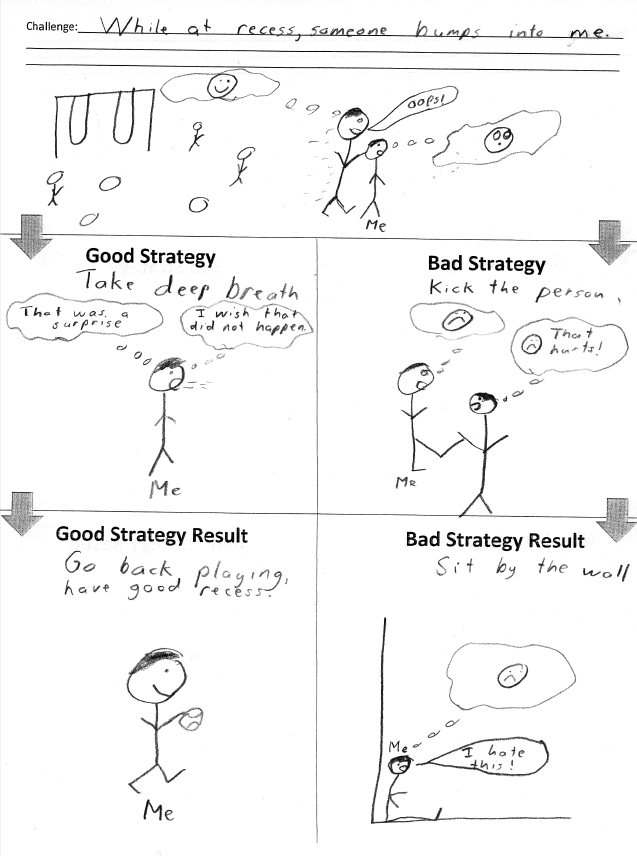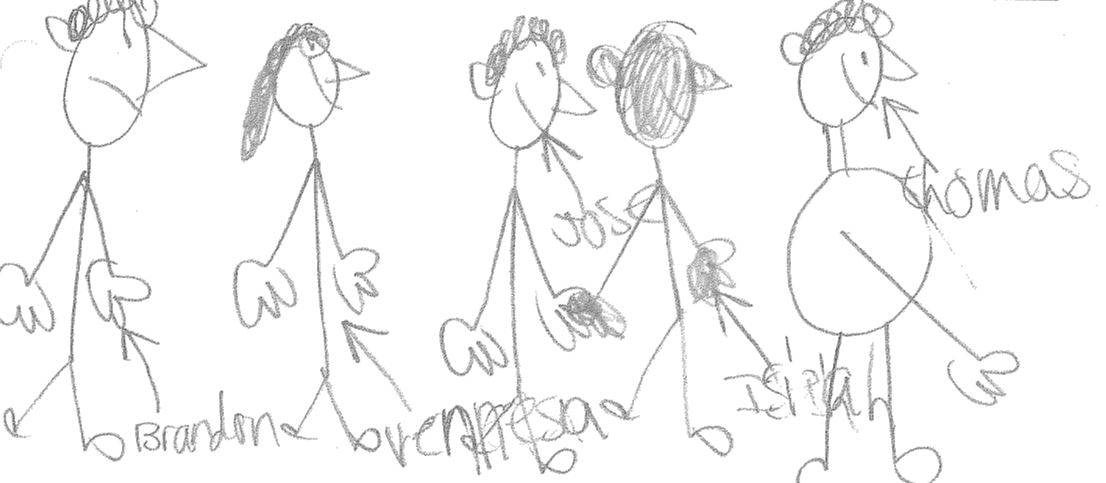Increasing your student’s capacity to accurately reflect on their behavior in a manner that might influence future behavior is an uphill battle when it comes to supporting those with autism. I personally struggled with this as a high school teacher with my student Brandon over ten years ago. After seeking out different methodologies, I ended up creating a reflection tool that was a cross between Comic Strip Conversations and Contingency Mapping. I have since used it many times over as a consultant with students from kindergarten up. I call it Contingency Comics. I have no formal research to demonstrate its effectiveness, but I can say I have seen it have a positive impact on a number of students with high functioning autism. As a behavior analyst, I am tasked with having the filter of only promoting the best of researched based interventions, so I share this with you not as a promotion of a tool but rather to call out that such a method needs to be further analyzed. Let me show you how it works.
Following the occurrence of a targeted undesired behavior, once the student has returned to baseline the teacher sits down with the individual and brings out the following sheet. This sheet is the framework by which they will discuss what happened and a potential alternative to the undesired behavior.
At the top of the page the teacher writes out the challenge or trigger that brought about the behavior. In the space provided in that box, the teacher and/or the student draws what that moment looked like using stick figures. Who was in the room, what was being said, and what people were thinking. This allows for the student to more fully see the big picture of the setting in more of a freeze frame.
The teacher and student then discuss what bad strategy was used by the student as a result of the challenge, and again draw it out in the box titled “bad strategy”. Just below that is drawn a representation of what happened as a result of the behavior. The intent is not to make the individual feel bad for what happened, but rather the impact that was had on other people. To conclude on a positive note, the teacher and student go back and draw what strategy could have been used that would have brought about better results, and what those results would have been. Pinpointing the difference in thoughts and emotions expressed by the people in each scenario better demonstrates the importance of using the good strategy.
What makes this tool different as a reflective strategy is that it is also used proactively. Every day as a part of their morning routine or check in, the teacher works with the student on filling out one of these sheets with the challenge being something that may come up later in the day. In the same way that we preview the schedule or read a social story, this allows the student the opportunity to be primed for what is to come and in a very detailed way think through how to achieve desired outcomes. Because this is done daily, this type of learning may become routine. When an undesired behavior is exhibited and this is pulled out for reflection it may not be seen by the student as something punitive, but rather a learning tool. Saving each sheet and creating a binder of these for the student to flip through may then increase their capacity to remember how to deal with the multiple challenges that might come their way in a day.
While the pictures can be drawn by either the student or the adult, it is better if the student is the artist. It may allow for them to express concepts or beliefs that they would not otherwise be able to verbalize. With my student Brandon, I never fully understood his fear of being last until he was able to draw it out for me in one of these sheets. His perception that everyone else was happy when he was at the back of the line opened up new whole new dialogue on how he saw the world.
Too often I have come across students with high functioning autism who after a behavioral episode access some sort of “processing sheet” or “think time” that does not take into consideration the individual’s deficits. If such standard procedures are not working for a child on the spectrum, I would consider using Contingency Comics as an alternative. Students with autism are gifted with unique minds. Sometimes we must consider unique interventions if we are to make a difference in the areas that they struggle the most. As I stated earlier though, a call for further research on this method seems more than appropriate at this time before fully promoting it as a best practice.










Love that this strategy involves is more visual (which may of hfa students are) and seems less punitive and more learning based than some of the things I have seen used. One comment though, we are trying to stay away from labeling behavior as “good” and “bad” because these can be internalized by the child, suggest maybe using “expected” and “unexpected” instead?
Pingback: Behavior Blossoms